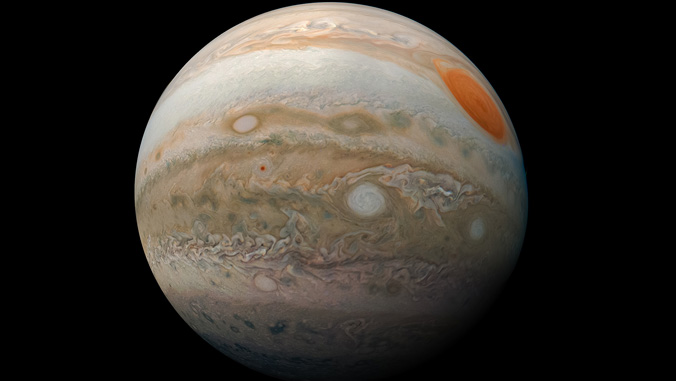
Current and former astronomers from the University of Hawaiʻi Institute for Astronomy (IfA) have wrapped up a massive collaborative study that set out to determine if most solar systems in the universe are similar to our own. The 30-year Hawaiʻi-based planetary census sought to find where giant planets tend to reside relative to their host stars.
In our solar system, the giant planets—Jupiter and Saturn—are found in the chilly outer regions, while smaller planets tend to orbit closer to the Sun. Earth lives in an intermediate tropical zone well-suited to life, at a distance of 1AU (astronomical unit) from the Sun. Jupiter is about 5 AU from the Sun, and Saturn is at 9 AU. An AU, the distance from the Earth to our Sun, is about 93 million miles.
“Dynamically speaking, Jupiter and Saturn are the VIPs—Very Important Planets—of the solar system,” said IfA Parrent Postdoctoral Fellow Lauren Weiss. “They are thought to have shaped the assembly of the terrestrial planets, potentially stunting the growth of Mars and slingshotting water-bearing comets toward Earth.”
We are normal

New data reveals that, on average, there are 14 cold giant planets per 100 stars in the galaxy, so although the solar system is not the most common type of planetary system in the galaxy, it is well represented. The number of giant planets detected around nearby stars suggest that billions of giant planets reside in the Milky Way Galaxy.
Researchers also found that giant planets tend to reside about 1 to 10 AU from their host stars, a mostly icy region located beyond these stars’ temperate zones.
The research team included Weiss, former IfA graduate student BJ Fulton, and former IfA professor Andrew Howard. Fulton, now a staff scientist at Caltech’s astronomy center, received the Astronomical Society of the Pacific’s Robert J. Trumpler Award in 2017, recognizing his PhD thesis work on the distribution of extrasolar planet masses as unusually important to astronomy.
The new research is reported in two articles in The Astrophysical Journal Supplement.
Maunakea plays key role in data collection

Researchers observed 719 sun-like stars for more than three decades, finding 177 planets, including 14 that were newly discovered. The planets have masses between one-hundredth and 20 times the mass of Jupiter.
Although the project, called the California Legacy Survey, originated in the Golden State in the 1990s, about half of the data was obtained at the W. M. Keck Observatory on Maunakea. It is the longest-duration exoplanet survey to date.
Planets that are a bit smaller than Jupiter and Saturn, Uranus and Neptune are located beyond Saturn, but the survey is not sensitive to planets in that size range and at that distance.
“While we can’t detect smaller planets similar to Neptune and Uranus that are very distant from their stars, we can infer that the large gas giants like Jupiter and Saturn are extremely rare in the outermost regions of most exoplanetary systems,” explained Fulton.
“This survey is a great jumping-off point for future instruments that are sensitive to planets the size of Earth,” said Howard, who will work with a cutting-edge new instrument at Keck in 2022 that can detect Earth-sized planets.
The collaboration included researchers from IfA, Caltech and the University of California, and primarily used Keck and the Shane and Automated Planet Finder telescopes at Lick Observatory, near San Jose, California.
The team plans to continue to sift through data for new patterns and clues to help understand the characteristics and formation of other star systems, as well as our own solar system. They are also looking forward to next-generation surveys.
This research is an example of UH Mānoa’s goal of Excellence in Research: Advancing the Research and Creative Work Enterprise (PDF), one of four goals identified in the 2015–25 Strategic Plan (PDF), updated in December 2020.

